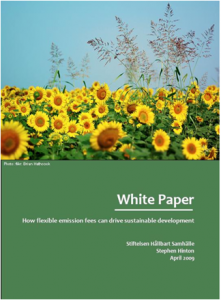 It may sound impossible to you as you have probably heard that environmental destruction is the price we pay for economic growth. However, it is just as clear that environmental destruction is the price future generations pay for environmental destruction. If you get what I mean.
It may sound impossible to you as you have probably heard that environmental destruction is the price we pay for economic growth. However, it is just as clear that environmental destruction is the price future generations pay for environmental destruction. If you get what I mean.
Many economists I have met have looked at me with a look of “why don’t you get it? If you put a price on the environment then market forces will take care of the rest”.
And putting a price on the environment is just what has NOT happened. I am always fascinated to think of the sound inside a car: the wind noise, the ticking of the clock, the purr of the engine. Contrast that to the noise you hear standing by the roadside. Traffic noise is ugly. I have to hear it – even if I am not the one making it. Why is it so that the driver does not hear it but the pedestrian does?
Well it’s because somewhere deep in our modern value system we think it’s OK that I get the quiet and you get the noise even though I am making the noise. That is externalisation. You pay for my emissions. I carry on for free. You get the pollution and no compensation.
Now suppose we decided to phase out traffic noise. We could put a heavy fee on noise and every month raise the fee to drive noise abatement technology until users complied. As the fee was increased, people would follow their wallets and invest in quiet cars or decide to put up with the fee. Either way you have suddenly demonstrated the first Axiom of TSSEF”s (The Swedish Sustainable Economy Foundation) flexible fee mechanism: the price of pollution is the price you pay to not do it.
All this money going into government coffers demonstrates the second Axiom: flexible fees do not affect economic growth (they are merely a cost on the balance sheet). Nor do they drive inflation. This might sound strange at first, but consider that all the money flowing into the coffers is actually an income. So the cost of living is the same, rather the emissions part is made more expensive, making the other parts relatively cheaper.
And that is the key to making flexible emission fees work: increasing fees and redistributing them via for example a tax break. People spend the tax break and this drives up employment.
All of this in turn drives the demand for sustainable, non-polluting service up and the demand for polluting services down. In short, carefully applied, felxible fees can help transition a whole country,
Read more in our white paper whitepaperFE_V2.
Leave a Reply